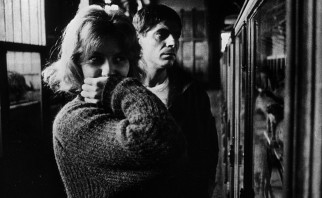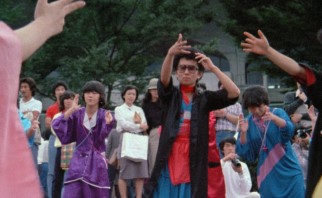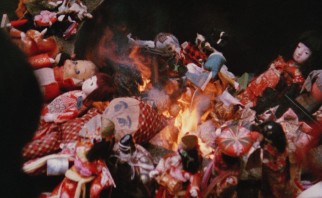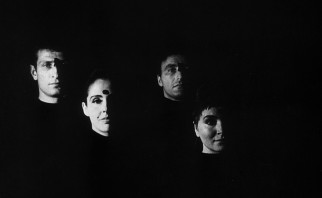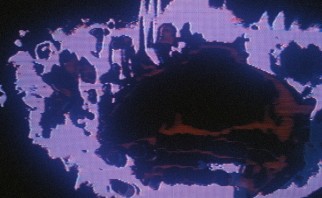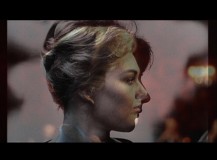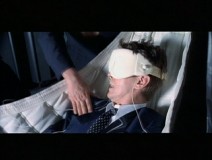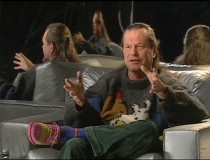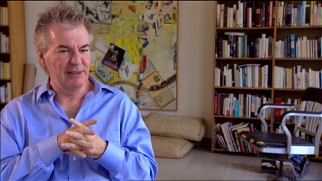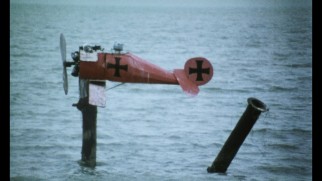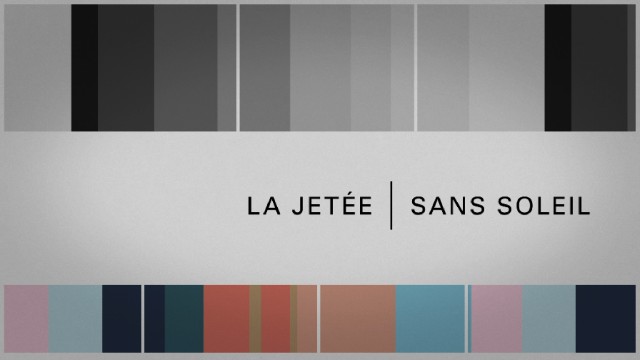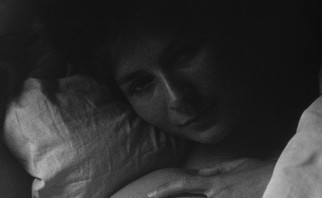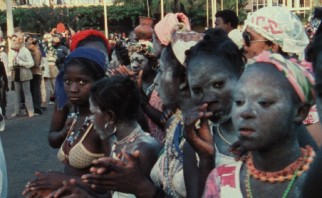La Jetée / Sans Soleil: The Criterion Collection Blu-ray Review
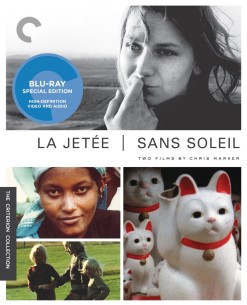 |
La Jetée
French Theatrical Release: February 16, 1962 / Running Time: 28 Minutes / Rating: Not Rated Writer/Director: Chris Marker Cast: Jean Négroni (Narrator), Hélène Chatelain (The Woman), Davos Hanich (The Man), Jacques Ledoux (The Experimenter), André Heinrich, Jacques Branchu, Pierre Joffroy, Étienne Becker, Philbert von Lifchitz, Ligia Borowczyk, Janine Klein, Bill Klein, Germano Faccetti Sans Soleil French Theatrical Release: March 2, 1983 / Running Time: 104 Minutes / Rating: Not Rated Writer/Director: Chris Marker Narrator: Alexandra Stewart (English version), Florence Delay (French version) 1.66:1 Widescreen / LPCM Mono 1.0 (English, French) Subtitles: English for Hearing Impaired, English Not Closed Captioned; French Extras Subtitled in English Blu-ray Release Date: February 7, 2012 / Suggested Retail Price: $39.95 Single-sided, dual-layered disc (BD-50) / Clear Keepcase Still available on DVD (released June 26, 2007) |
Buy La Jetée & Sans Soleil: Criterion Collection from Amazon.com: Blu-ray • DVD
I've been interested in La Jetée for a long time because it is credited as the basis for Terry Gilliam's superb 1995 film 12 Monkeys. I have, however, been skeptical of the connection, doubting much of Gilliam's contemporary, narrative-driven time travel tale could have derived from a 28-minute 1960s short film composed of still photographs. Surprisingly, there is a considerable amount of common ground between Monkeys and Jetée, which was released in its native country in early 1962. This artful sci-fi two-reeler tells the story of a nameless soldier (Davos Hanich) who is haunted by an image of a pretty woman (Hélène Chatelain) on a boarding platform (i.e. a jetty) at Paris' Orly Airport. It is from his childhood, predating the outbreak of World War III. The devastating conflict wreaked havoc on humanity, which has moved underground to survive post-apocalypse. In this subterranean camp, our protagonist has been chosen to be sent back in time to gather resources that can help society in his time. The film is pretty vague on the specifics of the mission and of time travel, which involves lying in a hammock with wired blinders over the eyes.
The traveler winds up being sent to pre-WWIII Paris, where he meets and becomes friendly with the woman. They bond over the stuffed animals at a museum. The pleasant romantic experiences are numbered, though, and by the time that vision from his childhood becomes clear, it is too late to change.
Gilliam's film obviously offers a lot more story in its over two-hour runtime, but the foundation remains quite faithful to Marker's imaginative black & white photo-roman, down to the use of stuffed animals and ominous whispers (though Marker's are German). Marker's short boasts a nice score and effective use of sound, both of which heighten the stills that typically each last about three seconds (or approximately 0.3 frames per second). A single brief (almost literally blink and miss) moment employs three seconds of actual film, and the power and significance of that is quite remarkable. Another intended and realized effect comes in the abrupt climax, which picks up the pace so that stills display for just half-a-second or less.
La Jetée is certainly a striking film or, if you prefer, a striking narrated slideshow. As a product of the French New Wave (specifically, the more experimental, less famous Left Bank contingency), this lends to allegorical and political readings. But ultimately it is humanity that drives and distinguishes this haunting short, whose narrative benefits from the innovative design.
Sans Soleil (English title: Sunless) is innovative in its own way. It is kind of a documentary, though one that is given a narrative framework. More readily labeled an essay film, this 104-minute movie consists of unscripted footage shot all over the world, which is then narrated by a woman reading the letters of the filmmaker, who is named at the end as Sandor Krasna. Krasna is fictitious, as is his brother Michel, who is credited with the score. In reality, Marker wrote, directed, shot, edited, and scored this freeform picture entirely by himself.
The film primarily consists of Marker's footage of what he calls "the two extreme poles of survival": Japan and to a lesser degree, the Republic of Guinea-Bissau in West Africa. It demonstrates that filming ordinary activity can still be mighty interesting to a foreign culture or different generation. It helps that Marker's material is tightly and thoughtfully edited, finding an appropriately irresistible rhythm. As on Jetée, the director excels here in the marriage of picture and sound, which is truly compelling. The narration by a French-Canadian actress named Alexandra Stewart in the default English presentation touches on profound themes pertaining to civilization, culture, memories, history, and spiritual customs.
The content is highly varied but logically arranged, amounting largely to a Japanese travelogue that occasionally journeys elsewhere. Marker sustains our interest in everything he shares. He contrasts a Tokyo department store's display of Pope John Paul II's items to a Japanese museum full of phallic statues and weirdly graphic stuffed animal sex exhibits. The latter itself is contrasted with the nation's censored erotic programming, briefly touched upon in a fascinating passage on whatever happened to be on television in his room. Other fascinating subjects include a group of teenaged girl street performers likened to Martian babies, the ditch where decades earlier hundreds of girls committed mass suicide to avoid capture by the US forces, a John F. Kennedy audio animatronic, a statue of future Richard Gere co-star Hachiko, and a shrine where people submit prayers for their cats.
The West African footage isn't as gripping. The highlight of it may be a bit on how the women try to avoid making eye contact with the camera. There isn't too much time spent there, which allows us to also make pilgrimage to the San Francisco sights of Alfred Hitchcock's Vertigo, Among the Africa segments, there is, randomly and upsettingly, a graphic and clearly licensed view of a giraffe's death by hunter and some maggot-infested human corpses. Those are the rare instances where it isn't entirely clear what Marker is trying to say. Most of the time, the narration is rather profound, conveying philosophical thoughts in a clever way. Sans Soleil may seem scattered, but it is also quite good, engaging us with footage and complementary observations that seek to define and unify the human experience. For how all over the place this film's view is, there is hardly a questionable decision or arrangement to Marker's composition, which invokes everything from Apocalypse Now to Pac-Man without jarring or losing the open-minded viewer.
VIDEO and AUDIO
Both films are presented in the 1.66:1 widescreen aspect ratio, being narrowly pillarboxed within Blu-ray's standard 16:9 frame. There are scratches and specks on La Jetée's photos, but no inconsistencies or other issues to their montage. I suspect there is no way to clean up the stills without overstepping the bounds of restoration or betraying the original presentation, but no one should be less than satisfied with the transfer. Sans Soleil's footage is usually fine, though on occasion it's quite grainy and very rarely succumbs to faint lines on the screen. For being shot on 16 mm, though, the film boasts impressive detail and clarity.
Sound is offered in your choice of English or French. Though the cultured Criterion Collection enthusiast ordinary wouldn't hesitate to choose the foreign language with English subtitles, the menu makes clear that Marker prefers you watch the movies in the language you are familiar with in order to get the most out of the experience. It's not like they are dubs either; aside from the fact that neither's soundtrack corresponds to moving mouths, Marker himself wrote both versions during the original productions. Both languages are presented simply in 1.0 monaural LCPM. Despite that and the fact that neither employed synchronized sound, both films are quite satisfactory aurally. Marker's synthesizer score on Sans Soleil is especially poignant and haunting. English SDH subtitles are provided for the English versions, as are more literal English translations of the original French audio.
BONUS FEATURES, MENUS, PACKAGING and DESIGN
The Blu-ray retains the healthy collection of bonus features assembled for the duo's 2007 Criterion DVD release and adds one item, presenting all in high definition though sources and ratios vary. Ever the enigma, Marker keeps a safe distance from the edition, clearly approving and participating, but taking efforts to hide the fact. Even the shrinkwrap sticker that ordinarily features the director's signature as a seal of approval here claims to be Guillaume Approved, with an illustration of a rotund cat which Marker evidently likes to personify him.
La Jetée's offerings include two excerpts from the French TV series "Court-circuit (le magazine)."
The longer one (9:15) reads Jetée in relation to Hitchcock's Vertigo (a film that interestingly features prominently in 12 Monkeys). Drawing on the fact that Marker's filming location was to become a home to film archives, The shorter "Court-circuit" excerpt (1:44) considers David Bowie's Jetée-inspired music video for 1993's "Jump They Say" as part of a bigger profile of the musician. It's a shame we couldn't get the whole video here.
"Chris on Chris" (9:36) is misleadingly titled, for Marker remains a no-show. This 1999 report courtesy of "Short Attention Span Cinema" from Britain's Channel Four does center on the filmmaker, touching upon his most recent work, the 1998 CD-ROM Immemory, his documentary on Akira Kurosawa, and the Tokyo bar which takes its name and wall photos from La Jetée. The piece collects thoughts from Michael Shamberg, the director of an obscure movie called Souvenir, on which Marker supplied computer graphics, and from 12 Monkeys director Terry Gilliam.
The longest inclusion is an extended 2005 interview of French filmmaker and professor Jean-Pierre Gorin (23:45). He talks, somewhat pretentiously, about La Jetée as a reflection of its maker and time. His comments are separated by quotes from other filmmakers and "The Twilight Zone", a failed effort to make this pompous reflection as highbrow and artistic as possible.
Given its own supplements section, Sans Soleil is also joined by an interview with Gorin (17:55), this one at least spiced up with some interesting clips and other visuals.
Better still is Junkopia (5:59), a spontaneously produced documentary shot on a July 1981 day by Marker and John Chapman and Frank Simeone, two members of Francis Ford Coppola's studio. The film surveys the driftwood artwork that decorated an Emeryville stretch of the shore of San Francisco Bay. Set to radio broadcasts and some opera singing, this odd piece is every bit as haunting as the feature presentations. It is newly released on this Blu-ray.
Opening with color bands, the Blu-ray's menu takes its sounds and imagery from whichever of the two films you seek to explore, featuring standout stills much like the cover art. Like all Criterion BDs I've seen, this one supports bookmarks on the movies and allows you to resume playback in every circumstance, which seem like fair trade-offs for the long time it takes to load bonus features and return to the top menu.
It wouldn't be a Criterion Collection release without a fancy companion booklet and this is one of Criterion's fanciest. The staple-bound, 48-page booklet offers a lot of engaging reads, starting with Marker biographer Catherine Lupton's 7-page essay "Memory's Apostle" on both featured films and their director. The article is heady, dense, and rewarding, although it seems too respectful of Sans Soleil's fictions.
Marker himself contributes the short essays "The Pathéorama" and "Notes on Filmmaking", on his childhood introduction to film and his adult production experiences and techniques. Even better is a 7-page interview of Marker by the Paris newspaper Libération, conducted in 2003 to mark the French DVD release of this set's two movies. We get a sense of the real Chris Marker otherwise denied to us, as he talks charmingly and fully about film, the difference between cinemas and television, his TV tastes, and his dissatisfaction over some marginalized obscure modern art.
In addition to the usual credits, chapter lists, transfer information, and acknowledgements, the booklet includes detailed biographies of the three apparently fictitious Sans Soleil collaborators along with a succinct one of the now 90-year-old Marker himself. An unattributed page is devoted to Sans Soleil and another to its opening quote. Finally, there is a short, precious essay on La Jetée in the style of its narration penned by a couple of English fans, the Brightons, which was discovered and apparently appreciated by Marker inside a screening program.
The clear keepcase, thick for a Blu-ray but in the format's standard height, makes use of the inside to display artwork from each film, which makes up for the booklet's somewhat limited illustrations.
CLOSING THOUGHTS
Chris Marker's La Jetée and Sans Soleil are far from mainstream sensibilities, but widely known and celebrated for their unusual power. The sci-fi photo-roman narrative short and globe-trotting fictionally-framed documentary Criterion's Blu-ray obviously offers the best presentation to date of the two films, boasting highly satisfying picture and sound, especially considering the modest production methods. The hour of retained extras, the newly-unearthed short "Junkopia", and the thick essay booklet are all fitting company to the two and help turn this set into quite the Chris Marker compendium. There's a great chance you don't know Marker's work and, if that is the case, this Blu-ray is your best way to become acquainted (with the similarly high-priced DVD the runner-up).
Buy La Jetée/Sans Soleil: The Criterion Collection from Amazon.com: Blu-ray / DVD
|
Related Reviews:
DVDizzy.com | DVD and Blu-ray Reviews | New and Upcoming DVD & Blu-ray Schedule | Upcoming Cover Art | Search This Site
DVDizzy.com Top Stories:
New: Corman's World: Exploits of a Hollywood Rebel • Hugo • Mystery Science Theater 3000: Volume XXIII
The Tree of Life • Renaissance • Micmacs • The Thin Red Line • Into the Wild • The Apartment
Sacred Planet • Crumb • Hearts of Darkness: A Filmmaker's Apocalypse • My Life as a Dog
Text copyright 2012 DVDizzy.com. Images copyright 1962-1983 Argos Films and 2007-2012 The Criterion Collection and Janus Films.
Unauthorized reproduction prohibited.

